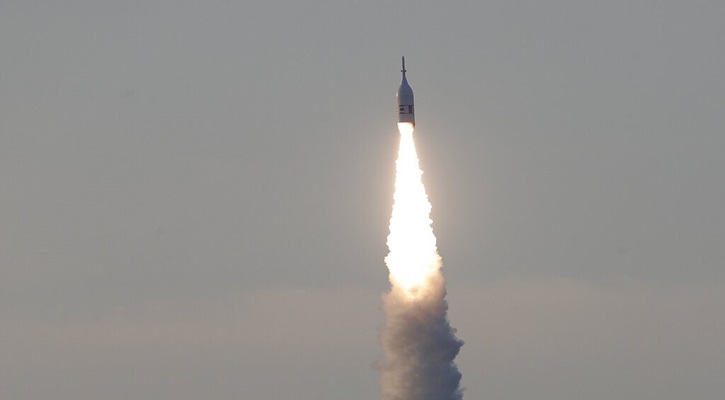Rolle im Portfolio
IShares Global Infrastructure UCITS ETF provides exposure to the 100 largest companies engaged in the management, ownership, or operation of infrastructure and utilities assets globally.
Despite being advertised as a benchmark for the broad infrastructure sector, global utilities providers make up close to four fifths of the index, with oil and gas pipelines and industrial transportation rounding out the remainder.
Utilities offer a direct investment into a regional economy's growth, as it is literally impossible to export these essential services. Under the utilities umbrella, the index contains both regulated utilities providers and merchant power generators. Regulated utilities have historically provided stable dividends and returns. Merchant power generators, on the other hand, tend to have a wider variance of returns because of commodity price fluctuations.
Despite the word "global" in its name, investors should be aware that this fund is geographically biased toward developed countries and in particular the United States, which accounts for around 50% of geographic exposure.
This exchange-traded fund, given its narrow sector focus, would be best deployed as a satellite holding to complement an already well-diversified portfolio.
At the time of this writing, the reference index has exhibited a five-year correlation to the MSCI World Index of 59%, implying some diversification benefits when added to core equity holdings.
Historically, the utilities sector has produced strong, stable cash flows, which have translated into higher dividends. As of this writing, this ETF has a dividend yield roughly 1.5% higher than that for the MSCI World Index.
Fundamentale Analyse
Utilities firms, which represent around 80% of the reference index, supply indispensable services and goods, such as water, natural gas, or electricity and often operate within heavily regulated and naturally monopolistic environments.
The prohibitively high capital investment costs associated with building power or water plants and related infrastructure act as a natural barrier to entry within the utilities sector. These capital requirements mean that it is often inefficient to have more than one electricity grid or gas pipeline serving a single catchment area. For these reasons, the utilities market is often naturally suited to a monopoly or oligopoly.
The services that utilities provide are considered necessary for the most basic levels of human consumption and provide the basic inputs for a well-functioning economy. For this reason, most governments retain extensive control over the sector through the use of regulation. Even in the US, where the market has seen significant deregulation, transmission and distribution operations remain tightly regulated. In an effort to trade off the requirements of consumers (low and stable prices) and shareholders (maximum profit) of the monopolistic utilities, governments often allow them to make a predefined, reasonable profit. This arrangement has historically brought investors a steady cash income, distributed in the form of dividends.
The near-universal requirement for utilities goods and services within modern society means that the demand will be less sensitive to fluctuations in the wider economy when compared with other sectors. As a result, utilities stocks tend to outperform other equity sectors in times of economic downturn but to underperform in periods of economic growth.
Since utilities projects are capital-intensive, these companies are particularly sensitive to changes in interest rates and any limitations on access to credit and equity markets. For example, in the wake of the credit crisis, in an attempt to stabilise their balance sheets, banks reduced lending to capital-intensive, long-term projects, severely curtailing international deal flow. Because of loose monetary policy globally, borrowing costs have hovered near historical lows for some time, but they won't remain at that level indefinitely. When rates do rise again, capital-intensive projects may be shelved or, if necessary, financed in the hope of renegotiating borrowing terms at a later date.
Looking forward, investors in this sector should also consider the potential risks arising from regulatory changes, given the huge governmental influence on the utilities markets.
Indexkonstruktion
The FTSE Macquarie Global Infrastructure 100 Index is a free-float, market-cap-weighted index offering exposure to the 100 largest companies from the broader FTSE Macquarie Global Infrastructure Index. Index constituents are chosen from developed and advanced emerging markets and fall into four specific industry categories as defined by the Industry Classification Benchmark: utilities (about 80%), oil and gas pipelines (15%), and industrials (5%). In order to be eligible for inclusion, firms must meet minimum liquidity requirements and be engaged in the management, ownership, or operation of infrastructure and utility assets. The index is rebalanced semiannually, in June and December. Geographically speaking, the fund is heavily tilted toward US stocks. As of writing, the US accounts for 54% of the index's weighting, followed by the United Kingdom (8%), Canada (6%), and Spain (6%). At the time of writing, the largest single equity exposure is Duke Energy (4%), followed by Nextera Energy (4%) and National Grid (4%).
Fondskonstruktion
The fund uses full physical replication to track the FTSE Macquarie Global Infrastructure 100 Total Return Index. It aims to track the performance of the reference index by owning all the constituent shares in the same weightings as those stipulated by the index. The fund also uses futures for cash management purposes. This is standard practice and helps limit tracking error. IShares engages in securities lending and can lend up to 100% of the securities within this fund to improve its performance. The gross revenue generated from this activity is split 62.5/37.5 between the fund and the lending agent BlackRock, whereby BlackRock covers the costs involved. The fund lent out 14.35% on average and a maximum of 24.46% over the 12 months to 31 Dec 2015, generating a 0.05% net return. To protect the fund from a borrower's default, BlackRock takes collateral greater than the loan value. Collateral levels vary between 102.5% and 112.0% of the value of securities on loan, depending on the assets provided by the borrower as collateral. Additional counterparty risk-mitigation measures include borrower default indemnification. Specifically, BlackRock commits to replace the securities that a borrower would fail to return. The indemnification agreement is subject to changes, and in some cases without notice.
Gebühren
The iShares Global Infrastructure UCITS ETF levies a total expense ratio of 0.65%, which is slightly higher than other ETFs tracking global infrastructure indexes. Moreover, the tracking difference (fund return minus index return) during the past few years suggests that the annual cost of holding the fund tends to be lower than the TER. This can be partly explained by the positive contribution of securities-lending activity (for example, the net lending return was 0.05% in 2015) and the fact that the fund enjoys a better withholding tax rate than the index. In addition to holding costs, ETF investors will typically be charged trading costs, including bid-offer spreads and brokerage commissions, when buy and sell orders are placed for ETF shares.
Alternativen
As of writing, there are several alternative ETFs providing global equity exposure to the infrastructure equity sector.
The most popular one, as measured by assets under management, is the db X-trackers S&P Global Infrastructure ETF. Its underlying index, the S&P Global Infrastructure Index, implements sector caps, which reduce exposure to utilities and increase the presence of industrials and energy relative to the iShares global-infrastructure ETF. The fund uses synthetic replication and levies a TER of 0.60%.
The SPDR Morningstar Multi-Asset Global Infrastructure UCITS ETF offers a different sort of exposure. In addition to holding equity, the SPDR ETF's underlying index also includes debt issued by infrastructure companies such as Transport for London and Veolia Environment. Compared with its competitors, the SPDR fund also offers a significantly broader exposure, including around 500 equity and 1,000 fixed-income components. This fund is physically replicated and charges a TER of 0.40%.
Another alternative to consider would be a strictly utility-focused ETF. The Lyxor MSCI World Utilities ETF tracks MSCI's global utilities market-capitalisation-weighted index. Geographic weightings are similar to the FTSE/Macquarie Infrastructure 100 as the US represents more than half of the index's value (57%), followed by the UK (10%) and Japan (7%). To deliver the index return, Lyxor uses synthetic replication and charges a TER of 0.40%.








.jpg)








